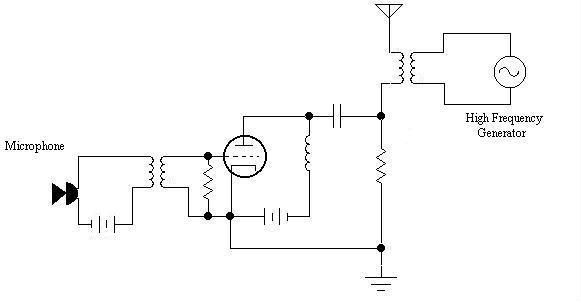|
When ever we are looking at a schematic diagram, we must look at it
from 2 directions. Top to Bottom, and Left to Right:
First: No circuit can operate without some kind of Power, In this
schematic, we have 2 batteries shown operating the circuit.
While it may be true that electrons flow from
negative to positive, it is usually easier to understand movement of
power through a circuit using the Conventional current flow theory,
otherwise known as the Franklin theory, which states that electricity
flows from positive to negative. When looking at a schematic, it is
customary to start with the highest positive voltage, which is normally
at the top of the diagram, and work your way down to the lowest voltage,
usually ground, which is located at the bottom of the
diagram.
Second: The purpose of most circuits is to move
some kind of signal. Signal flow normally goes from Left to Right.
Signals can be anything from basic AC sine
waves, to audio, video, radio, or data signals. They normall begin with
some signal source on the left, and move to the right.
Before you can fully understand the circuit, I
will have to give you a brief introduction to microphone construction and
theory. In the following illustration, I show a breakdown of how 3
different types of microphones work. In all three types, when we speak
into the microphone, the sound waves from your voice create vibrations in
the air. When these sound waves reach the microphone, they vibrate the
diaphram of the microphone, which is usually a very thin layer of flexible
plastic. This diaphram works like the eardrum in your ear, and vibrates
back and forth at the same frequency ( pitch ) and amplitude ( volume
level ) of the sound waves that stimulate it. The diaphram in all three
types move left and right as shown. The third pictures a 3 dimensional
representation of a magnetic type microphone for ease of
understanding |
|

